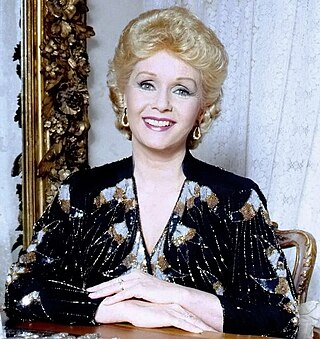
Mary Frances "Debbie" Reynolds was an American actress, singer, and businesswoman. Her career spanned almost 70 years. She was nominated for a Golden Globe Award for Most Promising Newcomer with her portrayal of Helen Kane in the 1950 film Three Little Words. Her breakout role was her first leading role, as Kathy Selden in Singin' in the Rain (1952). Her other successes include The Affairs of Dobie Gillis (1953), Susan Slept Here (1954), Bundle of Joy, The Catered Affair, and Tammy and the Bachelor (1957), in which her performance of the song "Tammy" topped the Billboard music charts. In 1959, she starred in The Mating Game and released her first pop music album, titled Debbie.
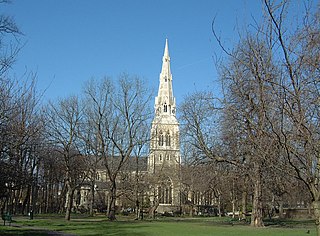
Camberwell is an area of South London, England, in the London Borough of Southwark, 2+3⁄4 miles southeast of Charing Cross.

Elephant and Castle is an area of South London, England, in the London Borough of Southwark. The name also informally refers to much of Walworth and Newington, due to the proximity of the London Underground station of the same name. The name is derived from a local coaching inn.
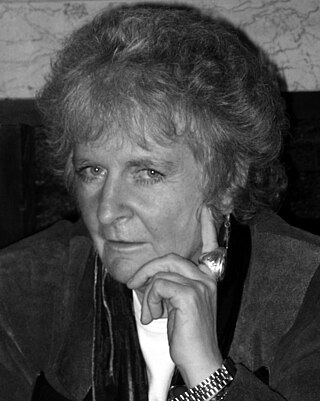
Margaret ("Maggi") J. Hambling is a British artist. Though principally a painter her best-known public works are the sculptures A Conversation with Oscar Wilde and A Sculpture for Mary Wollstonecraft in London, and the 4-metre-high steel Scallop on Aldeburgh beach. All three works have attracted controversy.

The Studio Museum in Harlem is an American art museum devoted to the work of artists of African descent. The museum's galleries are currently closed in preparation for a building project that will replace the current building, located at 144 West 125th Street between Adam Clayton Powell Jr. Boulevard and Lenox Avenue in Harlem, Manhattan, New York City, with a new one on the same site. Founded in 1968, the museum collects, preserves and interprets art created by African Americans, members of the African diaspora, and artists from the African continent. Its scope includes exhibitions, artists-in-residence programs, educational and public programming, and a permanent collection.

The A215 is an A road in south London, starting at Elephant and Castle and finishing around Shirley. It runs through the London Boroughs of Lambeth, Southwark and Croydon.
Carrie Mae Weems is an American artist working in text, fabric, audio, digital images and installation video, and is best known for her photography. She achieved prominence through her early 1990s photographic project The Kitchen Table Series. Her photographs, films and videos focus on serious issues facing African Americans today, including racism, sexism, politics and personal identity.
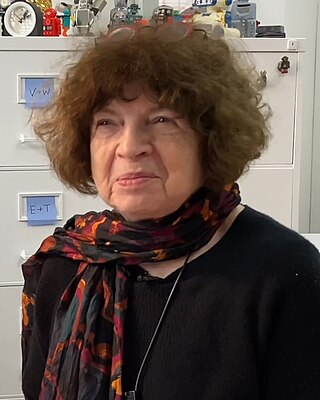
Jasia Reichardt is a British art critic, curator, art gallery director, teacher and prolific writer, specialist in the emergence of computer art. In 1968 she was curator of the landmark Cybernetic Serendipity exhibition at London's Institute of Contemporary Arts. She is generally known for her work on experimental art. After the deaths of Franciszka and Stefan Themerson she catalogued their archive and looks after their legacy.
Ketna Patel is a British-Indian pop artist.
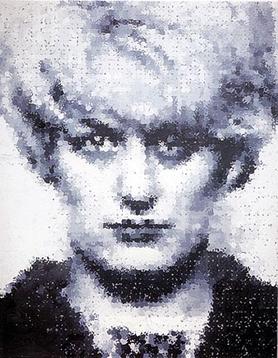
Myra is a 1995 large painting which is a reproduction of the mugshot of Myra Hindley shortly after she was arrested for her participation in the Moors murders and was created by Marcus Harvey in 1995. It was displayed at the Sensation exhibition of Young British Artists at the Royal Academy of Art in London from 8 September to 28 December 1997.

Moira Forsyth was an English stained-glass artist. Her father was Gordon Forsyth a Scottish ceramics designer, stained-glass artist, and teacher. They both made works for the St. Joseph's Church in Burslem, Stoke-on-Trent, Staffordshire. She made her name for her stained-glass works, such as those found at Guildford Cathedral, Norwich Cathedral and Eton College Chapel.

The Temptation of St. Anthony is a painting by Spanish surrealist artist Salvador Dalí. Painted in 1946, it is a precursor to the body of Dalí's work commonly known as the "classical period" or the "Dalí Renaissance".

Helen Wilmot Mason was a New Zealand potter as well as the co-founder and editor of the New Zealand Potter magazine for which she also wrote. She was appointed to the New Zealand Order of Merit, for services to pottery, in 2005.

Gertrud Amon Natzler was an Austrian-American ceramicist, who together with her husband Otto Natzler created some of the most praised ceramics art of the 20th century, helping to elevate ceramics to the status of a fine art.
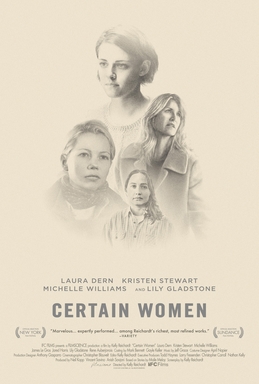
Certain Women is a 2016 American drama film edited, written, and directed by Kelly Reichardt. Based on "Native Sandstone", "Travis, B." and "Tome"—three short stories from Maile Meloy's collections Half in Love and Both Ways Is the Only Way I Want It—it stars Laura Dern, Kristen Stewart, Michelle Williams, Lily Gladstone, James Le Gros, and Jared Harris.
Margaretha Reichardt, also known as Grete Reichardt, was a textile artist, weaver, and graphic designer from Erfurt, Germany. She was one of the most important designers to emerge from the Bauhaus design school's weaving workshop in Dessau, Germany. She spent most of her adult life running her own independent weaving workshop in Erfurt, which was under Nazi rule and then later part of communist East Germany.
Beverley Magennis is a ceramic sculptor who works within the nexus of tile and architectural form.
Donna Gottschalk is an American photographer who was active in the 1970s and came out as lesbian around the time that Radical lesbians and the Furies Collective formed.

The extinction symbol represents the threat of holocene extinction on Earth; a circle represents the planet and a stylised hourglass is a warning that time is running out for many species. The symbol dates to at least 2012 and has been attributed to anonymous East London artist Goldfrog ESP. The symbol has been called "this generation's peace sign". It is used by environmental protesters, and has been incorporated in works by artists and designers such as Banksy. In 2019, the Victoria and Albert Museum acquired a digital copy of the symbol, and other artifacts featuring the symbol, for its permanent collection.
Cecily Sash was a South African artist, designer, and teacher. She taught design at the University of the Witwatersrand for more than 20 years.















